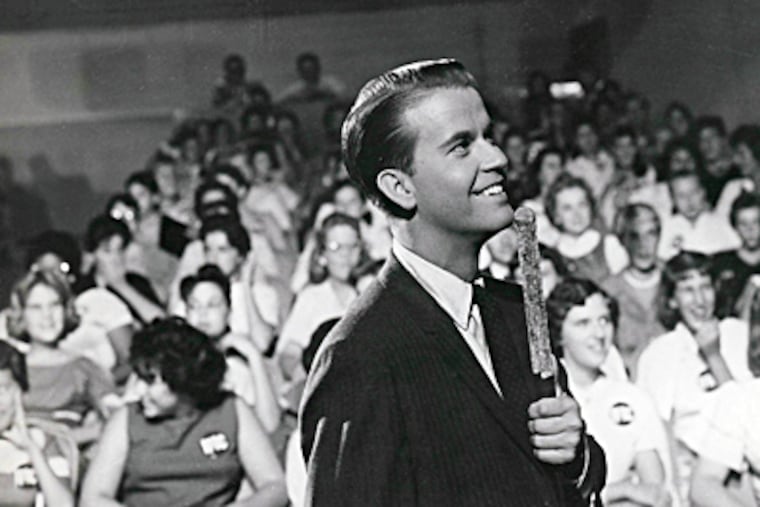New book on ‘American Bandstand’ focuses on its Philadelphia roots
Bandstandland: How Dancing Teenagers Took Over America and Dick Clark Took Over Rock ‘n’ Roll is an in-depth look at the show’s growth from local music program to national phenomenon, focusing on the Philadelphia years (1952-1964).

Growing up in Iowa in the late 1950s, Larry Lehmer frequently tuned in to American Bandstand. For many teenagers of his generation, it was must-see TV of that era.
Six decades later, Lehmer, 73, has turned his interest in the show into Bandstandland: How Dancing Teenagers Took Over America and Dick Clark Took Over Rock ‘n’ Roll (Sunbury Press). It’s an in-depth look at the show’s growth from local music program to national phenomenon, focusing on the Philadelphia years (1952-64).
“When I first started this project, Clark had controlled the narrative for 40 years,” said Lehmer. “All the books about Dick Clark had been written by Dick Clark. I thought it would be good for somebody else to shine a light on that.”
Lehmer’s research was bolstered by Bandstand Off My Back, an unpublished manuscript by Tony Mammarella, the show’s producer in the 1950s. “Without him, Dick Clark wouldn’t have known what music to play,” Lehmer said.
Bandstand began airing in 1952 on WFIL-TV, now WPVI (Channel 6), with Bob Horn as host. The weekday broadcasts mixed music, guests who lip-synced to their latest records, and dancing by students from local high schools. Horn lost his job after a drunk driving arrest in July 1956, allowing Clark to succeed him.
For Lehmer, the program wouldn’t have gone national and become American Bandstand in August 1957 when ABC picked up the show without Clark’s youthful appearance and clean-cut image. “Dick Clark was almost like a big brother to the kids on that show,” Lehmer said. “Bob Horn looked more like your father.”
Lehmer credits the dancers with making the show successful. “I was watching from the Omaha-Council Bluffs area, and we could identify with them. They were like the kids you went to school with,” he said.
The show turned such dancers as Bunny Gibson, Justine Carrelli, and Bob Clayton into celebrities. “Some of the fans would buy stacks of postcards to send them in to vote for their favorites on the dance contests,” Lehmer said.
Clark’s popularity grew, and he picked up a prime-time show, The Dick Clark Show, which aired on Saturday nights from 1958 to 1960. At one point, Lehmer writes, Clark was in “the unprecedented position of being on the air 13.5 hours a week, 8.5 of those hours on national television.”
As American Bandstand became successful, Clark consolidated control of the show and presented a contrast between his public and private personas.
“On air, he was very polished,” Lehmer said. “As a businessman, he was very savvy and pretty ruthless.”
When the show’s budget was limited, Clark adopted a policy of “kickbacks,” in which artists would return their checks for appearing on the program. “The bottom line was that no act was paid more than scale, and many acts performed for free,” Lehmer writes.
Over the years, Clark began investing in businesses related to record companies, like Swan Records, and music publishing. That meant he could profit from a successful record.
He declined to play “At the Hop,” a No. 1 single by Danny and the Juniors, unless he was given 50 percent of the publishing proceeds, according to songwriter Artie Singer in the film The Wages of Spin.
According to Lehmer, Clark played “16 Candles” just four times in 10 weeks. Then, after his publishing firm January Music acquired a stake in the song, he played it 27 times in 13 weeks, and it became a top-five hit in early 1959.
ABC-TV told Clark to choose between a TV career and his outside interests. He chose the former and managed to keep his job after a congressional investigation into payola even as other broadcasters, such as Alan Freed, were dismissed.
“It was kind of like the Wild West at the time. People didn’t think about ethical questions in those days,” Lehmer said. “He was taking advantage of the system that existed at that time. Alan Freed was not a personable type of guy and Dick Clark was.”